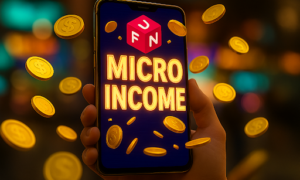Robinhood Markets Inc. (NASDAQ: HOOD), the zero-commission brokerage business, has filed for an initial public offering (IPO). In its investment prospectus, the company used a placeholder value of $100 million for the amount of capital it plans on raising. This indicates that the company has not yet decided on the IPO’s terms. These will be revealed in amendments to the S-1 filing. In this article, we will discuss some of the key findings from the investment prospectus.
Robinhood and the Gamification of Investing
In 2020, defying the common tendency of IPOs to have profitless growth, Robinhood was able to combine sensational revenue growth with profitability. The company earned approximately $7.5 million in profits, having made a net loss of about $107 million in 2019.
The company grew revenue from $278 in 2019 to $959 million in 2020. This amounts to a rise of 254% year-over-year. The company’s pattern of growth has continued into this year. Revenue for the first quarter of the year was $522 million, up some 309% compared to the same period in 2020.
The company’s incredible growth is founded on its success in bringing in a new generation of retail investors and getting them to invest in ways that are beneficial for Robinhood. The first part of this can be seen by the growth in the number of registered users and funded accounts. At the beginning of 2021, the company had around 31 million registered users, double the number of registered users it had in 2020. The number of funded accounts grew by 151% to 18 million, from the end of 2020 to the end of the first quarter of 2021. In the first quarter of 2020, the company had 7.2 million funded accounts. In 2019, that number was just 5.1 million. Not only has the company succeeded at bringing in new users to buy stocks as diverse as Solarium spray tans, it has got those users to commit more of their capital to Robinhood. Average revenue per customer in the first quarter of the year was $137, a rise of 65% compared to the same period in 2020, when the number was $83. The cohort of investors brought in during the first quarter is the company’s most lucrative ever.
The second part of why the company has been able to grow so sensationally is related to the way in which the company has been able to gamify investing through its use of bonuses, push notifications and other prompts, and rewards, to keep its users engaged and encourage them to trade frequently. At the macro level, this has the effect of making markets more volatile. At the micro-level, this has the effect of ensuring that, regardless of what the return profile of its users may be, Robinhood is able to extract a hidden fee from its users trading.
Many people wonder, or should, how a zero-commission brokerage is able to make any money. It’s free, so where does the revenue come from? The company earns its revenue primarily through a controversial practice known as payment for order flow (PFOF). Essentially, what this means is that Robinhood exploits the spread between ask and bid prices by selling customer trades to a market maker who in turn pays Robinhood compensation. The money maker commits to executing the trade at a price equal to or greater than the market price. The rise of meme stocks -some of which may appear as attractive in your stock scanners- has, then, been a boon for Robinhood: meme stocks usually have wide spreads between the bid and ask prices, which ensures that Robinhood earns more revenue when its users invest in meme stocks, than it does when they invest in non-meme stocks.



































